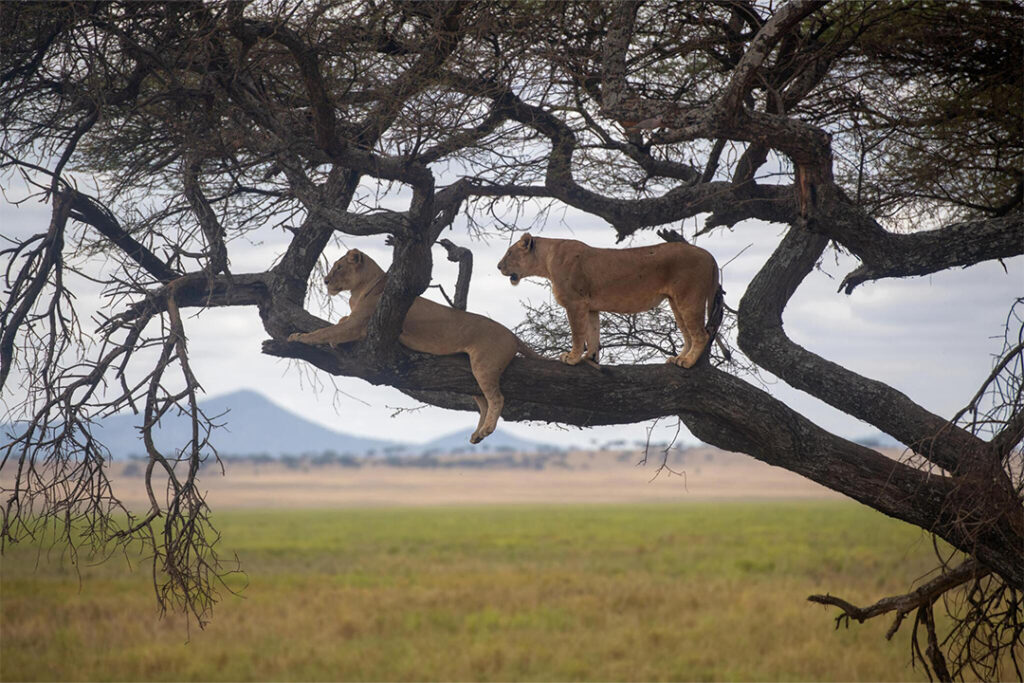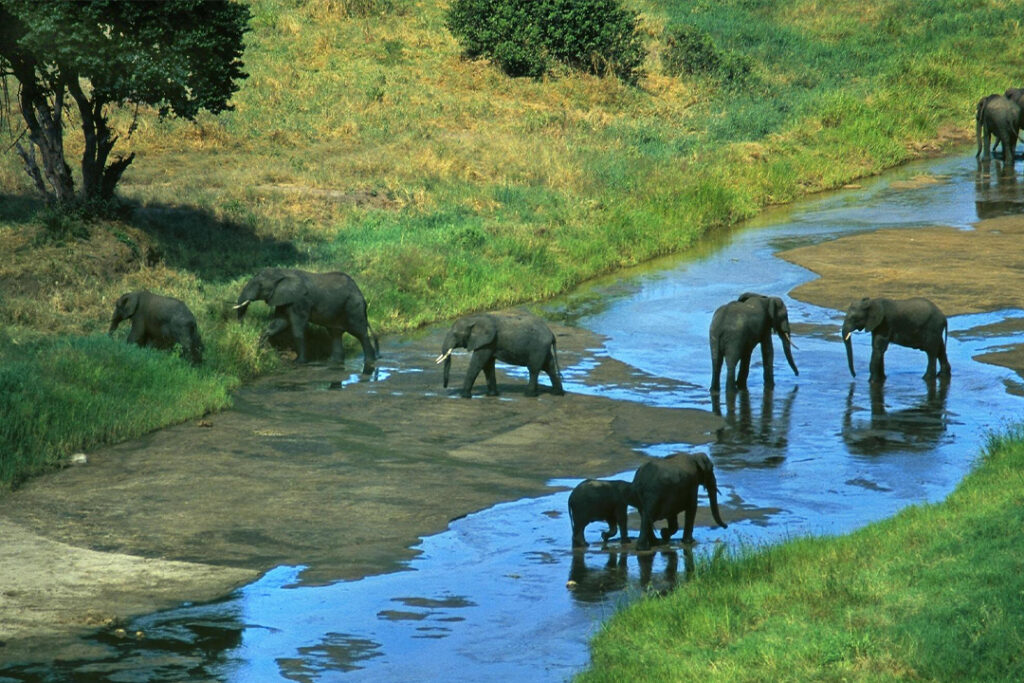TANZANIA NATIONAL PARKS
Serengeti National Park
Serengeti National Park
The Serengeti is a vast ecosystem sprawling across East-Central Africa, renowned for its rich diversity of plants, birds, and animals. Encompassing approximately 12,000 square miles, as documented by NASA, it aptly earns its name, which originates from the Maasai language, meaning “endless plains.” Stretching from northern Tanzania to southwestern Kenya, it encompasses the renowned Serengeti National Park and various protected game reserves, diligently managed by the Tanzanian and Kenyan governments. Notably, the Serengeti National Park hosts the world’s most significant mammal migration, making it a premier destination for African safaris.
Altitudes within the Serengeti range from 3020 feet to an impressive 6,070 feet, as per UNESCO. The region typically experiences a warm and dry climate, with occasional rainfall, particularly from March to May, and a shorter rainy season occurring between October and November.
The Serengeti’s landscape can be broadly categorized into two distinct areas based on vegetation: Woodlands and Grasslands. Woodlands comprise grassy expanses dotted with trees, predominantly Acacia and Terminalia species. On the other hand, Grasslands encompass rivers, smaller plains, and moderately sized grassy areas, including derived grasslands formed as a result of recurring fires.



What Makes Serengeti National Park Tours Unique?
Serengeti National Park tours offer a unique and unparalleled wildlife experience. The park’s vast plains are home to the iconic Big Five—lion, elephant, buffalo, leopard, and rhinoceros—along with a myriad of other species, making it a haven for wildlife enthusiasts and photographers alike. Witnessing the spectacular Great Migration, where millions of wildebeest and zebra traverse the Serengeti in search of greener pastures, is a once-in-a-lifetime opportunity. Additionally, the park’s diverse ecosystems, from savannas to woodlands, provide a captivating backdrop for game drives, hot air balloon safaris, and guided walking tours, ensuring a multifaceted exploration of nature’s wonders.


Why Should You Visit the Serengeti National Park for Vacation?
Visiting Serengeti National Park for vacation offers an unparalleled wildlife experience amidst breathtaking natural beauty. Witnessing the awe-inspiring spectacle of the Great Migration, where millions of wildebeest, zebras, and other animals traverse the plains, is a once-in-a-lifetime opportunity. Embark on thrilling safari adventures to encounter Africa’s iconic Big Five – lions, elephants, buffaloes, leopards, and rhinoceroses – in their natural habitat. Immerse yourself in the diverse ecosystems of woodlands and grasslands, teeming with a plethora of plant and bird species. Whether gazing at a golden sunrise over the savannah or camping under a star-studded sky, Serengeti promises unforgettable moments of adventure, serenity, and connection with nature.
When is The Best Time to Visit Serengeti National Park?
The best time to visit Serengeti National Park depends on your interests. For witnessing the Great Migration, spanning from late June to September, when millions of wildebeest and other herbivores move in search of greener pastures, is ideal. However, this period also attracts crowds and higher prices. For fewer tourists and lush landscapes, consider visiting during the green season from November to May, although some areas may become inaccessible due to heavy rains. Ultimately, the best time depends on personal preferences, whether you prioritize wildlife sightings, crowd avoidance, or favorable weather conditions.

Serengeti National Park
Tanzania is renowned for its stunning natural beauty, including Mount Kilimanjaro, the Serengeti National Park, and Zanzibar’s pristine beaches. It’s also known for its diverse wildlife, particularly the annual Great Migration of wildebeest and other herbivores.
Swahili and English are the official languages of Tanzania. Swahili is widely spoken across the country, while English serves as the primary language for government, business, and education.
Most visitors to Tanzania require a visa, which can be obtained upon arrival at major airports and border crossings. However, it’s advisable to check the specific visa requirements based on your nationality before traveling.
The official currency of Tanzania is the Tanzanian shilling (TZS). Major credit cards are accepted in larger cities and tourist areas, but it’s advisable to carry cash for transactions in more remote areas.

